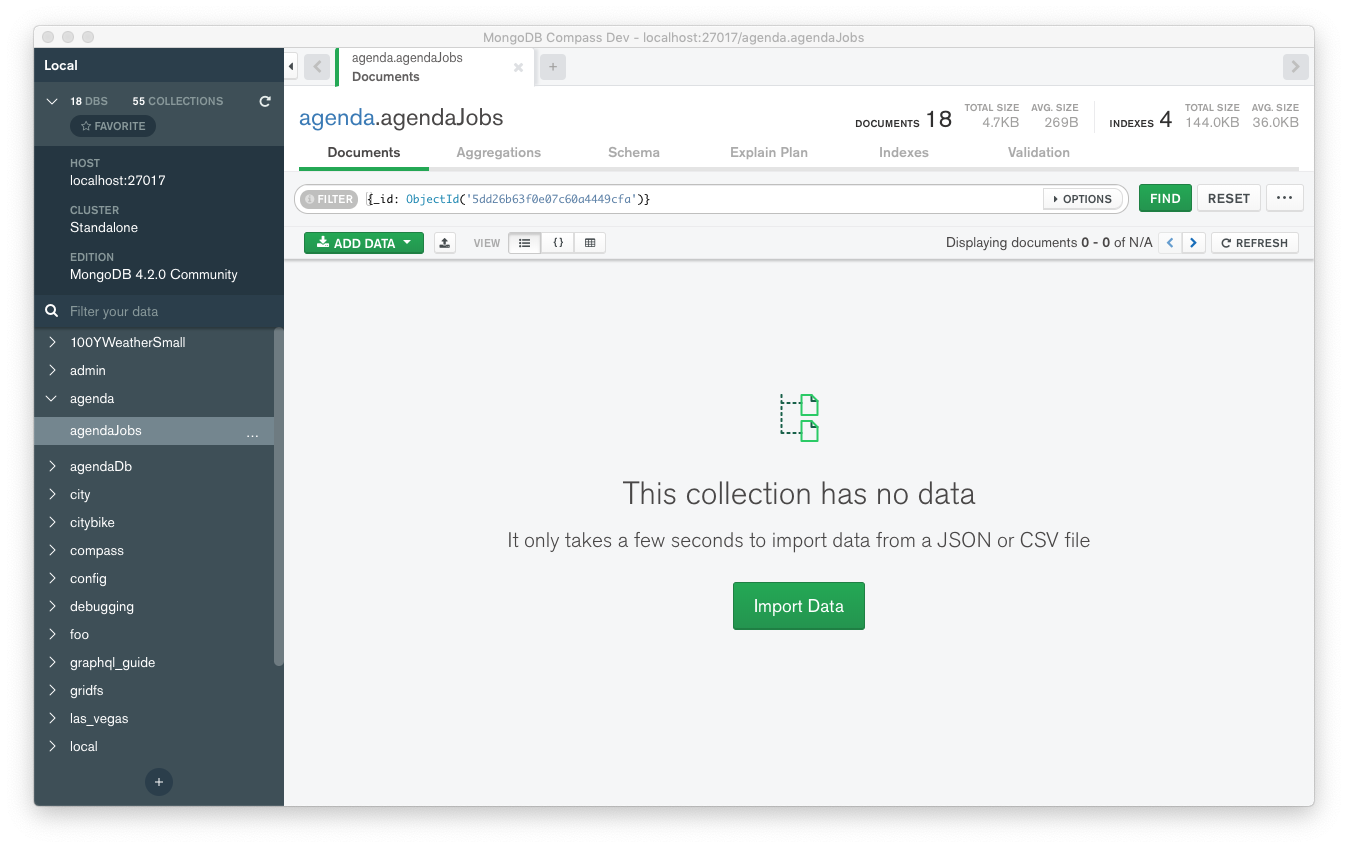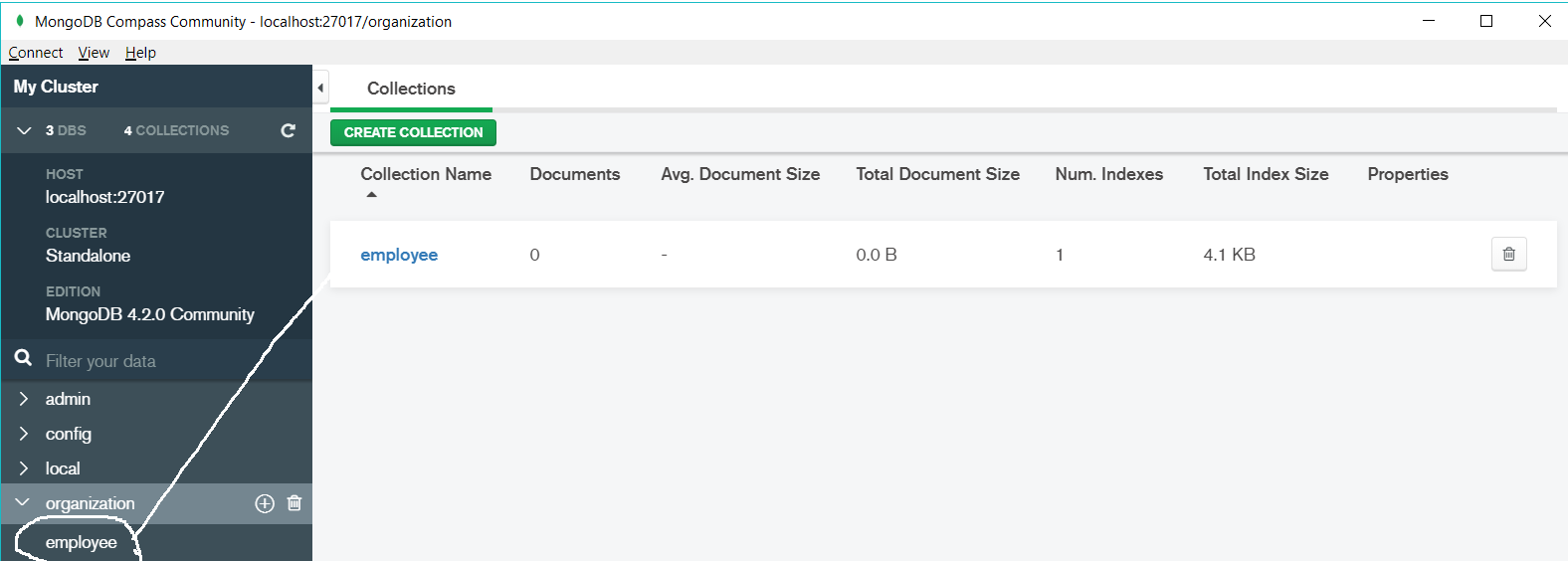

And for that I wanted the answer to the original question. However, I needed a quick and dirty solution that would likely be forwards and backwards compatible between old and new versions of MongoDB, provided there's nothing especially wacky going on.

Its maintenance of this streamlined design is one of the reasons MongoDB can achieve such high performance.I realize that this is quite an old question and that mongodump/mongorestore is clearly the right way if you want a 100% faithful result, including indexes.
#Mongodb compass export all collections drivers
For some functionality, the database server offloads processing and logic to the client-side (handled either by the drivers or by a user’s application code). It combines the ability to scale out with features such as secondary indexes, range queries, sorting, aggregations, and geospatial indexes.Īlthough MongoDB is powerful, incorporating many features from relational systems, it is not intended to do everything that a relational database does. MongoDB is a powerful, flexible, and scalable general-purpose database. Chained replication is useful in certain replication topologies, and it is enabled by default in MongoDB. This type of replication is called Chained Replication because it is a two-step replication process. Sometimes a SECONDARY database can replicate data from another SECONDARY. Usually, SECONDARY databases copy data changes directly from PRIMARY.As a result, datafiles on SECONDARY are kept in sync with changes on PRIMARY. Oplog entries are applied in the same order they were inserted in the log. Then, the SECONDARY database applies changes from the Oplog to its own datafiles.If there are any changes, then Oplog entries are copied from PRIMARY to SECONDARY as soon as they are created on the PRIMARY node. The SECONDARY database is querying the PRIMARY database for new changes in the Oplog.Changes saved in the Oplog are sequential-that is, saved in the order that they are received and executed. The PRIMARY database saves data changes in the Oplog. In the preceding model, the PRIMARY database is the only active replica set member that receives write operations from database clients.The following diagram depicts the architecture diagram of a simple replica set cluster with only three server nodes – one primary node and two secondary nodes: Explain the Replication Architecture in MongoDB.
#Mongodb compass export all collections license
and licensed under the Server Side Public License (SSPL).Ģ4.

MongoDB works on the concept of Collection and Document.It provides easy scalability and is a cross-platform, document-oriented database.It uses JSON-like documents with optional schemas. MongoDB is an open-source NoSQL database written in C++ language.To manage huge sets of unstructured data like log or IoT data, a NoSQL database is used. When dealing with data, there are two types of data as we know – (i) structured data and (ii) unstructured data. Structured data is usually stored in a tabular form whereas unstructured data is not. What are some utilities for backup and restore in MongoDB? Explain the concept of pipeline in the MongoDB aggregation framework. What is the Aggregation Framework in MongoDB? MongoDB Intermediate Interview Questions.

What are some of the advantages of MongoDB?


 0 kommentar(er)
0 kommentar(er)
